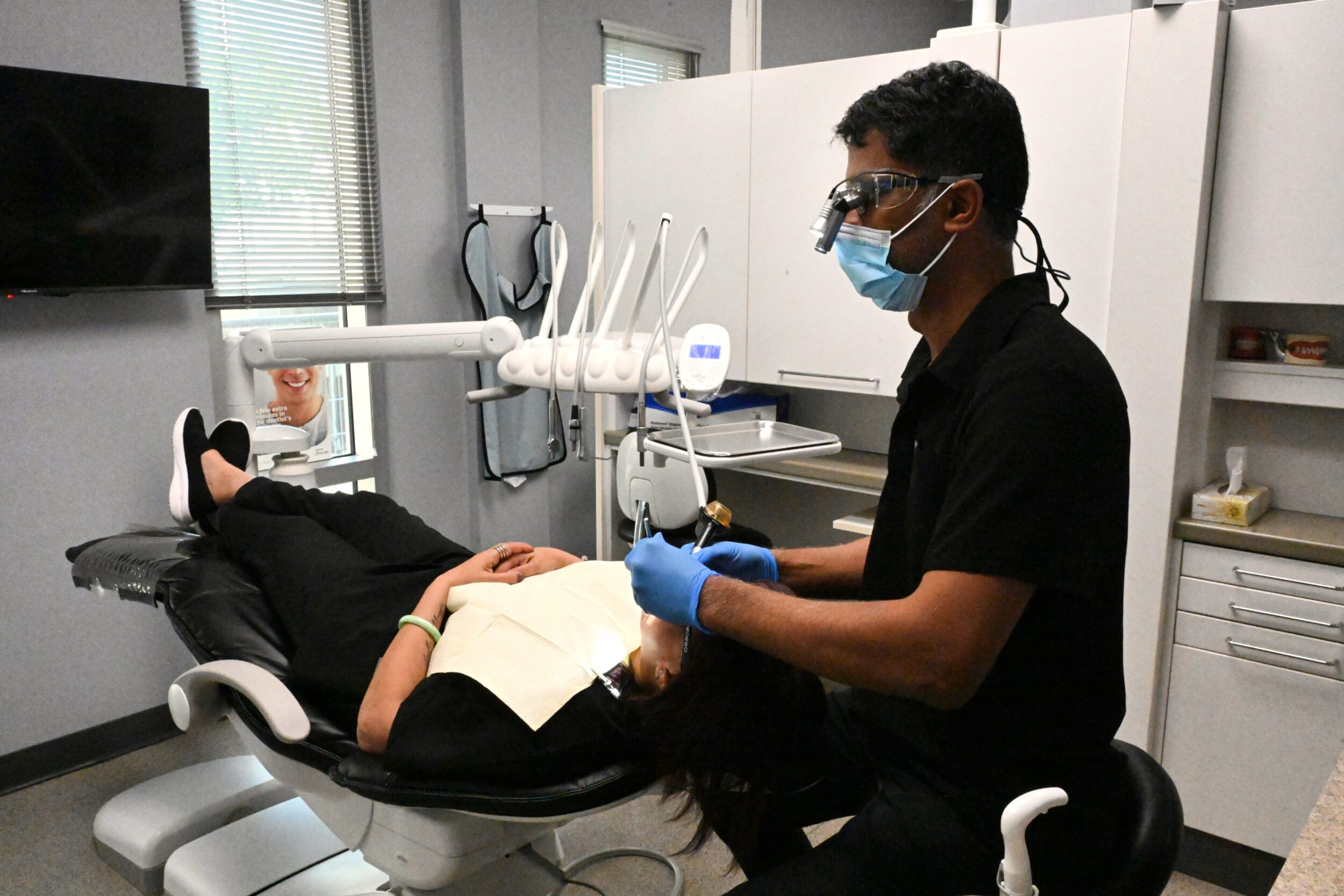Antibiotic Treatment
If left untreated, periodontal disease leads to severe inflammation and tooth loss. The use of antibiotic treatments can be used in combination with scaling and root planing, curettage, surgery, or they can be used as a stand-alone treatment to help reduce bacteria before and/or after many of the most common periodontal procedures.
Several different types of antibiotic treatments are available, including oral antibiotics and topical gels that are applied directly to the gum pockets to treat gingivitis. In cases of acute periodontal infection, refractory periodontal disease, prepubertal periodontal disease and juvenile periodontal disease, antibiotic treatments have been super effective.

It is possible to prescribe antibiotics at a low dose for longer-term use or as a short-term medication to prevent recolonization of the bacteria.
Oral Antibiotics
In contrast to topical gels, oral antibiotics tend to affect the entire body and are less commonly prescribed. The following are some specific details about several types of oral antibiotics:
Tetracycline antibiotics
Among the most commonly used antibiotics in periodontal treatment are tetracycline hydrochloride, doxycycline, and minocycline. In addition to their antibacterial properties, they reduce inflammation and inhibit collagenase (a protein that destroys connective tissue).
Macrolide antibiotics
The use of this group of antibiotics has been shown to reduce inflammation and bacterial growth associated with periodontitis.
Metronidazole
In cases of severe or chronic periodontitis, this antibiotic is commonly used along with amoxicillin or tetracycline to combat inflammation and bacterial growth.
Topical Gels and Strips
Direct delivery of antibiotics to the gum surface has the advantage of not affecting the rest of the body. In the case of scaling and root planing procedures, topical gels and direct delivery methods tend to be preferred over their oral counterparts. The following are some of the most commonly used direct delivery antibiotics:
PerioChip®
After root planing, a chip is placed into the actual gum pocket as part of the procedure. Chlorhexidine, an antibacterial antiseptic, is slowly released by PerioChip®. In most cases, PerioChip® reduces pocket depth in patients suffering from periodontitis.
Arestin®
After scaling and root planing, this Minocycline antibiotic is administered in the form of mini capsules into the gums.
Atridox®
In order to ensure the best results, this doxycycline gel conforms to the contours of gum surfaces and solidifies on top of them. This gel gradually releases the antibiotic medication over a period of several days.
Actisite®
This thin strip contains tetracycline hydrochloride, which is similar to dental floss. In order to kill bacteria and reduce the depth of gum pockets, the thread is temporarily placed between the tooth and gum. For an enhanced effect of antibiotics, several threads may be placed for a period of approximately 10 days.
Elyzol®
The metronidazole antibiotic is available in the form of a gel and a strip. Due to its ability to destroy parasites as well as oral bacteria, it is unique.
It is usually possible to observe noticeable periodontal improvements following the administration of systemic or oral antibiotics. In order to aid in the healing of your periodontal disease, your periodontist or dentist will incorporate and recommend the necessary antibiotic treatments.
Ask your dentist if you have any questions regarding periodontal disease or antibiotic treatments.